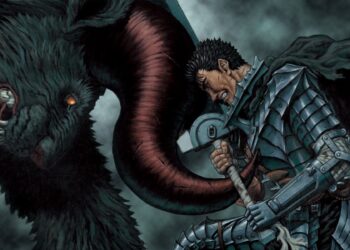Can You Actually Feel Pain in Your Dreams? Let’s Dive into the Dreamscape
Ever woken from a dream and thought, “Did I really feel that?” This often happens if it was something unpleasant, like stubbing a toe on a dream coffee table. The dreamscape is fascinating. Can we feel real sensations, especially pain, in dreams? This question deserves unpacking.
Decoding Dream Pain: The Fundamentals
So, can you feel pain in a dream? Yes, it is possible. But don’t rush to get dream painkillers. It’s not the same as the pain of touching a hot stove in real life. Your brain can process and perceive pain while dreaming.
Your brain acts like a movie projector. During non-REM sleep, it stays quiet. But during REM sleep, dreams become vivid. Here, a part of the brain called the thalamus becomes active. The thalamus acts like a switchboard for sensory information. It sends signals to the cerebral cortex. This is the brain’s command center for interpreting sensations, including images, sounds, and feelings.
This thalamic activity explains why you can see, hear, and feel things in dreams with a realism that can unsettle you. You’re immersed in a sensory world crafted by your brain. It’s like being in the Matrix, but just your subconscious creating a show.
Is dream pain common? Not really. Research shows that while it’s possible to feel pain in dreams, it’s not an everyday occurrence, even for healthy individuals. It’s like spotting a unicorn in your backyard—possible but rare. Studies confirm these sensations can manifest in dreams. So if you’ve felt a pinch in a dream, you are not alone.
Interestingly, dream pain comes with strong emotions, especially anger. It hints that pain in dreams ties to your emotional state. It might reflect your mind coping with emotional or psychological pain. Think of it as your brain’s dramatic portrayal of stress through physical sensation.
Everyone’s dream pain experience varies widely. Factors such as gender, personal pain threshold, and past experiences influence sensitivity to dream pain. Your mileage may vary significantly compared to your friends.
Lucid Dreams: When You Know You’re Dreaming (and Might Feel It More)
Let’s increase the dream oddity and discuss lucid dreams. Lucid dreams happen when you realize, “I’m dreaming!” It’s like knowing you’re in a play and deciding to rewrite the script.
Can you feel pain in a lucid dream? Yes, and possibly more intensely. Lucid dreaming gives your senses a sharp upgrade. Everything feels clearer, including pain. Some research shows pain in a lucid dream can linger even after waking up. What a rude awakening!
Scientists study the possibility of pain in lucid dreams. Why? For curiosity, of course, and to explore pain perception. Lucid dreaming offers insight into pain that simulates a lab—all in your head without real harm. Pretty interesting!
A study published in “Dreaming” reported that 74% of participants felt pain during lucid dreams. Even more surprising, 28% felt phantom pain after waking up. This blurs the line between dream and waking pain.
This opens many possibilities. Lucid dreaming could become a tool for pain management. Imagine studying how pain processes in a controlled dream environment. It might lead to new strategies for tackling pain. Perhaps therapists could use lucid dreaming techniques to help patients handle chronic pain safely.
There’s speculation about “transferring pain” during lucid dreams into wakefulness. While sounding sci-fi-like, research is in early stages. Still, this indicates how potent and real dream sensations can be.
Beyond the Ouch: A Symphony of Dream Senses
Pain is only one part of the sensory puzzle in dreams. Dream worlds aren’t just imagery and sounds; they can be sensory-rich experiences. It’s like virtual reality created by your brain from memories, emotions, and daily life.
Sight and sound are common in dreams, but what about smell? Yes, you can smell things in dreams. It happens less often than visual or auditory sensations, but olfactory dreaming exists. Some studies suggest women report smelling things more often than men, highlighting gender differences in sensory perception.
Taste can also appear in dreams. A study using specialized methods found approximately 0.7% of dreams include taste experiences. This might seem small, but think of how many dreams you have in your lifetime. That’s still a lot of dream meals—both tasty and not so tasty.
Touch sensations in dreams also feel real, especially in lucid dreams where senses amplify. You might feel dream sand’s texture, water’s chill, or a warm hug from someone. The realism is striking.
Why do dreams feel so real? They activate brain regions active during wakefulness and real experiences. During REM sleep, areas like the visual cortex, amygdala, thalamus, and hippocampus are all working hard. Your brain runs a full sensory simulation, blurring imagined and real experiences.
When Painful Dreams Leave a Mark: Impact and Implications
Dream pain isn’t just curiosity; it has real-world effects on sleep quality and well-being. Ever woken from a nightmare feeling awful? That isn’t all in your head.
Nightmares jolt you awake and can cause physical symptoms. You may sweat or feel short of breath or have a racing heart. Your body reacts to the dream content as if it’s real. Though your brain knows it’s “just a dream,” your body often doesn’t realize this.
For those with chronic pain, the dream connection is significant. Chronic pain disrupts sleep, leading to frequent nightmares and painful dreams. It creates a loop: pain disrupts sleep, poor sleep increases nightmares, and nightmares can heighten the sense of physical discomfort.
Pain can even amplify your perception. It follows you into dreams. This feels unfair.
Bad dreams, not just nightmares, link to physical pain. Emotional distress in dreams can affect your body. The boundary between mental and physical discomfort gets blurry.
Nightmares vs. Night Terrors: Knowing the Nighttime Demons
Nightmares and night terrors differ. Both are bad sleep experiences but quite distinct.
Nightmares are dreams that scare you. They can disturb your sleep and wake you up. You remember parts of these dreams. They feel like horror movies that shock you awake.
Night terrors occur during deep, non-REM sleep stages. You partially wake up but feel intense fear. Often, you don’t recall the event afterward. Your brain hits a panic button in the night and clears the memory.
Night terrors can be dramatic. Witnessing them is alarming. They involve screaming, thrashing, and heavy breathing. Despite this, people usually stay asleep and won’t respond easily. This can unsettle those nearby.
Decoding Dream Pain: What’s Your Brain Trying to Tell You?
What does pain in dreams mean? Dream interpretation isn’t precise but offers insights.
Dream pain is rare but linked to various factors. Emotional states, such as stress, anxiety, and unresolved issues can manifest in dreams. Your subconscious may use pain as a metaphor for this distress.
Trauma from past experiences influences dreams. Physical pain from waking life may resurface in your dreams. Your brain processes past traumas, sometimes replaying painful sensations.
The dream content matters too. Pain in dreams often feels realistic and localized. It might arise from violent events or traumatic incidents within the dream narrative. For instance, dreaming of an injury might result in pain in that body part.
Pain may also connect to strong feelings, especially anger. It might signify your brain’s attempt to cope with a painful experience. Dream pain serves as a paradoxical coping mechanism for distress.
The Weird and Wonderful World of Sleep: Other Sleep Phenomena
Sleep is a fascinating state of consciousness. Pain in dreams is just one of many bizarre sleep phenomena.
Sexsomnia captures attention. Sleep sex is a parasomnia where people engage in sexual behaviors during sleep. This can range from masturbation to intercourse. Often, individuals have no memory of the events afterward.
Sleep talking is common too. It often involves unintelligible utterances rather than profound revelations. It usually connects loosely to dream content rather than revealing deep truths.
Oneirophrenia is an obscure phenomenon. It involves dream-like derealization persisting into waking life. In severe cases, it mimics symptoms of schizophrenia. However, it’s often temporary, with about 60% of cases resolving in two years.
Dream Deep Dive: General Dream Facts
Before concluding, let’s touch on some dream facts for context.
Brain activity during REM sleep mirrors waking brain activity. The visual cortex, amygdala, thalamus, and hippocampus are active. This creates convincing sensory and emotional experiences during dreams.
Dream recall ties to sleep stages. Vivid memories signal those dreams occurred during REM sleep. REM time is prime for dream adventures.
Dream meanings vary greatly. Dreaming of death often symbolizes major life transition rather than impending doom. This reflects metaphorical endings and beginnings.
Likewise, dreams of being killed may indicate feelings of vulnerability in waking life. They signal subconscious threats or feelings of insecurity.
A common myth clarified: dreaming of someone does not mean they’re thinking of you. Dreams mostly reflect your own thoughts and experiences, not others’ feelings.
Unconsciousness and Pain: A Different Kind of Pain Experience
Pain in unconsciousness offers another perspective on pain experience.
Even unconscious people sense pain stimuli and can react. This is called nociception. However, they remain unaware of the pain consciously.
General anesthesia eliminates conscious pain awareness by blocking pain signals to the brain. This ensures patients don’t feel the surgery consciously.
A coma is prolonged unconsciousness from severe injury or illness. In a coma, individuals lack awareness of their environment, including pain. Nociception may exist, but conscious experience of pain does not.
Pain in dreams showcases the brain’s ability to simulate experiences. Pain in unconsciousness lacks this awareness, resulting in a bodily response without conscious recognition. Pain perception’s world is complex and covers waking, dreaming, and unconscious experiences. Sweet dreams, and avoid stubbing your toe on that dream coffee table!










